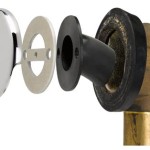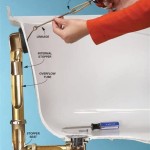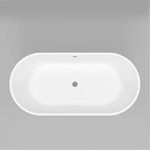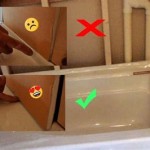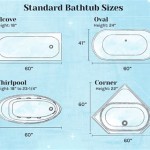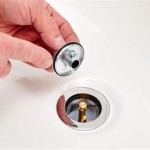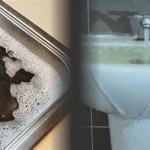Bathtub and Shower Inlay Kits: A Comprehensive Guide
Bathtub and shower inlay kits provide a practical solution for repairing and enhancing the aesthetic appeal of worn or damaged bathroom fixtures. These kits offer a more cost-effective alternative to complete bathtub or shower replacements, saving both time and money while yielding visually pleasing results. This article will delve into the various aspects of bathtub and shower inlay kits, including their types, installation procedures, benefits, and considerations for optimal use.
Understanding Bathtub and Shower Inlay Kit Types
Bathtub and shower inlay kits are categorized based on the materials used and the specific repairs they are designed to address. The most common types include acrylic, porcelain, and enamel repair kits, each possessing unique properties that make them suitable for different situations.
Acrylic inlay kits are primarily used to repair cracks, chips, and holes in acrylic bathtubs and shower bases. These kits typically consist of an acrylic resin compound, a hardener, and necessary application tools. The acrylic resin is mixed with the hardener to create a durable, waterproof filler that bonds strongly to the existing acrylic surface. Acrylic kits are known for their flexibility and ability to withstand temperature fluctuations, making them ideal for environments prone to changes in humidity and temperature.
Porcelain repair kits are designed for porcelain-enameled surfaces, which are often found in older bathtubs and sinks. These kits usually contain a porcelain epoxy compound, a catalyst, and application tools. The epoxy compound is formulated to match the color and texture of porcelain, providing a seamless repair that blends in with the surrounding surface. Porcelain repair kits are resistant to staining, scratching, and chemicals, ensuring long-lasting results.
Enamel repair kits are similar to porcelain repair kits in that they are used to fix chips and scratches on enamel-coated surfaces. However, enamel repair kits may utilize different bonding agents and color-matching techniques. Enamel kits are often used for minor cosmetic repairs where a complete refinishing isn't necessary. They provide a quick and easy way to restore the appearance of chipped or scratched enamel surfaces.
Beyond material-specific kits, there are also universal repair kits that contain a combination of fillers, adhesives, and color pigments to address a wider range of repair needs. These kits are versatile and can be used on various surfaces, including fiberglass, cultured marble, and composite materials. However, it's important to note that universal kits may not provide the same level of precision and durability as material-specific kits.
Choosing the right type of inlay kit is crucial for ensuring a successful repair. Factors to consider include the material of the bathtub or shower, the size and nature of the damage, and the desired aesthetic outcome. Consulting with a professional or referring to the manufacturer's guidelines can help in selecting the most appropriate kit for the specific application.
Installation Procedures for Bathtub and Shower Inlay Kits
The installation process for bathtub and shower inlay kits generally involves surface preparation, mixing the repair compound, applying the compound to the damaged area, and finishing the repair. Each step requires careful attention to detail to achieve optimal results and ensure the longevity of the repair.
Surface preparation is a critical step in the installation process. The damaged area must be thoroughly cleaned to remove any dirt, grime, soap scum, or loose particles. Use a mild detergent and a scrub brush to clean the surface, and then rinse thoroughly with water. Allow the surface to dry completely before proceeding to the next step. For deeper cracks or chips, it may be necessary to use a specialized cleaner or etcher to create a slightly rough surface that will promote better adhesion of the repair compound.
Once the surface is clean and dry, the repair compound can be mixed according to the manufacturer's instructions. Most kits require mixing two or more components together to activate the bonding agents. It is important to follow the mixing ratios precisely to ensure proper curing and bonding. Use a clean mixing container and a stirring utensil to thoroughly combine the components until a uniform consistency is achieved. Avoid introducing air bubbles into the mixture, as this can weaken the final repair.
With the repair compound properly mixed, it can be applied to the damaged area. Use a small applicator, such as a putty knife or a spatula, to carefully fill the crack, chip, or hole with the compound. Apply the compound in thin layers, allowing each layer to dry slightly before applying the next. This will help prevent the compound from shrinking or cracking as it cures. Overfill the damaged area slightly, as the compound will likely shrink during the curing process. The amount of overfilling necessary can be determined through practice and observation.
After the repair compound has been applied and allowed to cure, the excess material can be sanded down to create a smooth, flush surface. Use fine-grit sandpaper to gently sand the repaired area, blending it seamlessly with the surrounding surface. Be careful not to sand too aggressively, as this can damage the repaired area or the surrounding surface. Wet sanding is often recommended to minimize dust and provide a smoother finish. Wipe away any sanding dust with a clean, damp cloth.
The final step in the installation process is often the application of a sealant or topcoat to protect the repaired area and enhance its appearance. A clear sealant can help prevent water from seeping into the repaired area, which can lead to premature deterioration. A color-matched topcoat can further blend the repaired area with the surrounding surface, creating a more seamless and professional finish. Follow the manufacturer's instructions for applying the sealant or topcoat, and allow it to dry completely before using the bathtub or shower.
Benefits and Considerations When Using Bathtub And Shower Inlay Kits
Bathtub and shower inlay kits offer numerous benefits, including cost savings, time efficiency, and aesthetic improvements. However, there are also certain considerations to keep in mind to ensure a successful and long-lasting repair.
One of the primary benefits of using an inlay kit is the cost savings compared to replacing an entire bathtub or shower. Complete replacements can be expensive, involving demolition, plumbing work, and the purchase of new fixtures. Inlay kits, on the other hand, provide a targeted solution for addressing specific areas of damage, significantly reducing the overall cost. Additionally, DIY installation further lowers expenses, eliminating contractor fees. This makes inlay kits an attractive option for homeowners seeking to improve their bathrooms on a budget.
Inlay kits also offer time efficiency. Replacing a bathtub or shower can be a time-consuming project, often taking several days or even weeks to complete. In contrast, repairing a damaged area with an inlay kit can typically be accomplished in a few hours. This minimizes disruption to the household and allows for a quicker return to normal bathroom usage. The speed of repair also reduces the inconvenience associated with bathroom renovations, making inlay kits a practical choice for busy homeowners.
Aesthetically, inlay kits can significantly improve the appearance of worn or damaged bathtubs and showers. By repairing cracks, chips, and holes, these kits restore the original beauty of the fixtures and create a more visually appealing bathroom environment. The seamless finish achieved with a well-applied inlay kit can make the repair virtually undetectable, enhancing the overall aesthetic of the bathroom. This can be particularly beneficial for homeowners looking to sell their homes, as a well-maintained bathroom can increase property value and appeal to potential buyers.
However, it's crucial to consider the limitations and potential pitfalls of using inlay kits. The durability and longevity of the repair depend heavily on proper surface preparation, accurate mixing of the repair compound, and careful application techniques. Failure to follow the manufacturer's instructions can result in a weak or unsightly repair. Additionally, inlay kits may not be suitable for all types of damage. Severely damaged bathtubs or showers may require more extensive repairs or complete replacement. Furthermore, the color matching of the repair compound can be challenging, and it may be necessary to experiment with different color pigments to achieve a seamless blend with the surrounding surface. It is also important to consider the long term effects of these repairs. Over time, the repaired area may not hold up as well as the original material, leading to future repairs.
Before using an inlay kit, it is advisable to assess the extent of the damage and determine whether it is within the scope of what the kit can effectively repair. For complex or extensive damage, consulting with a professional may be necessary. It is also recommended to practice the installation process on a small, inconspicuous area before tackling the main repair. This will help develop the necessary skills and techniques to achieve a successful outcome. Proper ventilation is crucial during the installation process, as some repair compounds may emit fumes. Wear appropriate protective gear, such as gloves and a respirator, to avoid skin irritation or respiratory problems.
Choosing a high-quality inlay kit from a reputable manufacturer is essential for ensuring a durable and long-lasting repair. Read reviews and compare different kits to find one that is suitable for the specific type of bathtub or shower and the nature of the damage. Consider the skill level required for installation and choose a kit that is within the user's capabilities. By carefully considering these factors and following the manufacturer's instructions, homeowners can effectively use bathtub and shower inlay kits to restore the beauty and functionality of their bathrooms.

Napco Bathtub Inlays Ltd

16 In W X 40 L Bathtub Floor Repair Inlay Kit White Shower Base Flexible

Bathroom Bathtubs Floor Repair Inlay Kit Shower Bath Bone Waterproof 16 X 40 New

Fiberglass Ed Bathtub Floor Repair Inlay Kit Us Bath S

16 In W X 36 L Bathtub Floor Repair Inlay Kit White Wt 1636 1 The Home Depot

Nutub White Bathtub Inlay Kit Pvc Cpvc Material Repairs Leaks Scratches Non Slip Surface Easy Installation Includes Adhesive Gloves In The Parts Department At Com

Nutub White Bathtub Inlay Kit Pvc Cpvc Material Repairs Leaks Scratches Non Slip Surface Easy Installation Includes Adhesive Gloves In The Parts Department At Com

24 In W X L Shower Floor Repair Inlay Kit White Wt 2424 1 The Home Depot

Bathroom Bathtubs Floor Repair Inlay Kit Shower Bath Bone Waterproof 16 X 40 New

Nutub White Bathtub Inlay Kit Pvc Cpvc Material Repairs Leaks Scratches Non Slip Surface Easy Installation Includes Adhesive Gloves In The Parts Department At Com

